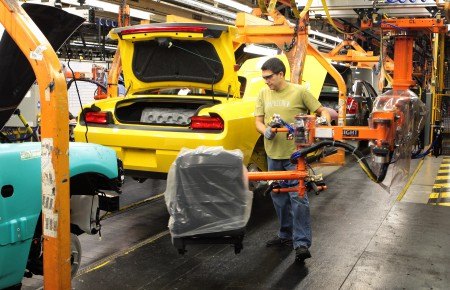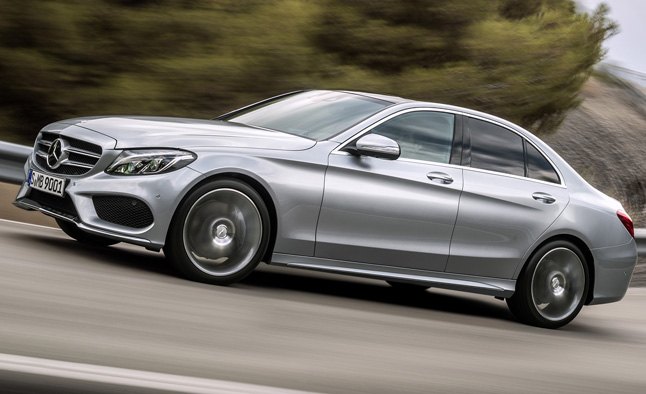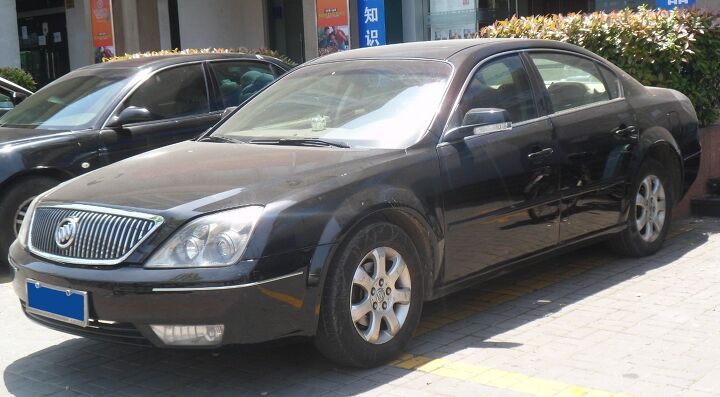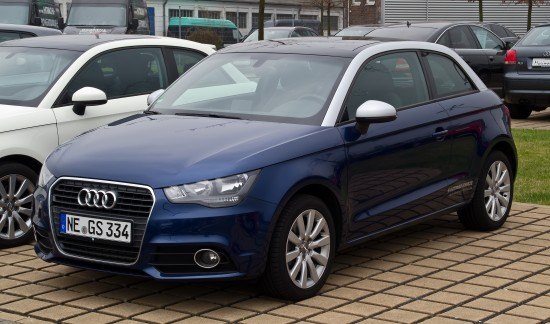#Manufacturing
Marichonne Still Seeking Location For New Minivans
Fiat Chrysler Automobiles NV boss Sergio Marichonne, in talks with federal and provincial governments in Canada for loans to help prepare their factories in Windsor and Brampton, Ontario for new vehicle production, may come to a decision about moving forward with plans for where new minivans will be built by the end of March 2014.
Chrysler Reportedly Asking For $700 Million From Canadian Government
With Canada’s federal government set to increase its own Auto Innovation Fund by $500 million CAD, a report by The Globe and Mail’s Greg Keenan now claims that Chrysler will look for as much as $700 million in government funding as part of a $2.3 billion investment in its Windsor, Ontario manufacturing facilities. In addition, the increased sum would also see funds allocated to the Brampton, Ontario plant that builds the Chrysler 300, Dodge Charger and Dodge Challenger
Hyundai Ready To Add Capacity After Two-Year Break
After a two-year break in expansion mandated by Hyundai Motor Company Chairman Chung Mong-koo in order to avoid quality issues experienced by Toyota during their aggressive growing spurt in the 2000s, Hyundai and Kia are both looking through feasibilities studies to determine where to invest in expanding their manufacturing footprint.
Chrysler Weighs Third Pickup Plant Marchionne Doesn't Really Want
Automotive News is reporting that last week’s conference call on Chrysler’s quarterly financials and the structure of the newly merged Fiat Chrysler Automobiles, CEO Sergio Marchionne said that Fiat Chrysler managers were considering whether or not to build a third pickup truck assembly plant to cope with high demand for Ram light and heavy duty trucks. Marchionne had earlier vowed to never build another assembly plant in North America and in the conference call he reiterated his preference to run existing pickup plants in Warren, Mich., and Saltillo, Mexico, “flat-out.”
BMW to End Mini Production at Magna Steyr
MINI Countryman cars being assembled at Magna Steyr’s Austrian facility.
The Kleine Zeitung newspaper reported on Thursday that the BMW Group will end contract production of Mini cars by Magna Steyr in 2016. Automotive News reports that the Austrian supplier currently builds the Mini Countryman and Mini Paceman. BMW will move production of the two models to BMW’s own Mini factory in Oxford, England, and to Mitsubishi’s former NedCar facility in the Netherlands, where the Dutch group VDL will start Mini production under contract later this year. Magna Steyr’s corporate parent, Magna International, said in a statement that its relationship with BMW will continue through a new vehicle manufacturing contract.
Barclay's Report Confirms TTAC's Story About F-150 Aluminum Difficulties
Automotive News is reporting that assembly plants in Dearborn and Kansas city will be shut down for a total of 13 weeks as it retools to switch production to the all new F-150 pickup truck that has an aluminum body. The launch of the 2015 F-150 will be closely watched, as Ford and its competitors see how consumers accept the lighter, more expensive truck.
Meanwhile, an analyst report seems to confirm TTAC’s initial story that Ford was forced to delay production of the new truck by up to three months due to difficulties with the new aluminum body.
Original Documents: The Corvette Story (Circa 1961) by P.J. Passon
Okay, so it’s not The Christmas Story, but while trying to track down a since deleted summary of an upcoming Society of Automotive Engineers paper that leaked details of the 8 speed automatic transaxle that the 2015 Corvette will offer, I came across another SAE paper concerning the Corvette, this one published in 1961, titled The Corvette Story. In 1961, just 8 years after the first Corvettes went on sale, fiberglass bodied cars were still a new thing. Chevrolet engineer P.J. Passon’s paper for the SAE goes over the processes involved in making the Corvette bodies and then how the cars are assembled. He discusses the 1961 Corvette’s engineering features and explains why GM went with fiberglass instead of steel and also why mass-market Chevrolet was making and selling a sports car with limited market appeal. I’m sure that anyone with an interest in Corvettes and Corvette history will find it worthwhile, though it’s also a nice snapshot of advanced materials manufacturing circa 1961.
P.J. PassonChevrolet Engineering Center
Chevrolet Motor Division
Warren MichiganBUILDING THE CORVETTE
In its brief life span of eight years, the Corvette has undergone rapid character development. It has built up a clientele all its own – demanding, but enthusiastic. Their attitude is contagious, and progress has come fast. I do not intend to cover the history of the Corvette this morning, except to say that its roadability has increased since 1953 in roughly the same proportion as its power-to-weight ratio or approximately two-to-one.
Mercedes-Benz Expands Alabama Facilities, Deals With Labor Issues Ahead of C-Class Introduction
Mercedes-Benz has been making improvements to its manufacturing facility near Tuscaloosa, Alabama in anticipation of the introduction of the all-new 2015 C-Class. On December 18, Mercedes held a grand opening ceremony for a new 900,000 square foot parts logistics center at the plant. Mercedes claims the $70 million dollar facility will employ 600 people.
Australian Government to Create $89 Million Fund For Affected Holden Employees
In the wake of General Motors’ decision to cease all manufacturing operations through Australian subsidiary Holden by 2017, the Australian government has announced that they will create a $100 million AUD ($89 million USD) fund for affected employees.
Next Holden Commodore To Be Made In China, Sport 4-Cylinder Engine
Just as TTAC predicted in earlier editorials, Holden will be receiving vehicles imported from China as part of its future product plan – the vehicle slated to be imported from China is no less than the next generation Commodore.
Audi CEO: Don't Count On Quick European Recovery
A bit of bad news from the Continent: Audi CEO Rupert Stadler is cautioning that Western Europe’s auto market will not recover before the end of the decade.
Are We About To Witness MQB's First "Cascading Failure"?
Reports out of the Berlin desk of Reuters suggest that VW could have a fairly large problem on their hands, one that TTAC discussed during heated battles over modular kit architectures – that of “cascading failures”.
Holden To Aussie Government "Moar Monies Plz"
Hot on the heels of a $275 million “investment”, Holden is going back to the Australian government, hat in hand, asking for more money. This time, Holden wants another $265 million to keep their assembly plants online.
Tennessee Prepares For An Onslaught Of Rogues
Nissan’s move to localize production of their cars and trucks is moving full steam ahead. The next generation Rogue, built on the new modular CMF architecture, will be manufactured at Nissan’s plant in Smyrna, Tennessee.
Where Is Currency Manipulation When We Need It: Ford Shuts Down Down Under
Ford has long been at the forefront of the currency debate, claiming currency manipulation when the yen went to levels that nearly killed the Japanese auto industry, and shouting “currency manipulation” now that the yen is back to normal levels. Now, Ford itself experiences the devastating effects of changing exchange rates: Ford is shutting down all its manufacturing operations in Australia. The reason: A strong Australian dollar. Says Reuters:



























Recent Comments